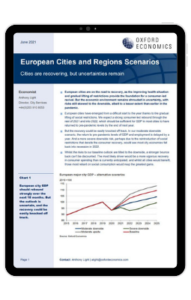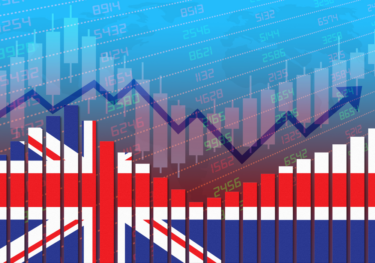Europe | Cities are recovering, but uncertainties remain

European cities are on the road to recovery, as the improving health situation and gradual lifting of restrictions provide the foundation for a consumer-led revival. But the economic environment remains shrouded in uncertainty, with risks still skewed to the downside, albeit to a lesser extent than earlier in the pandemic.
What you will learn:
- European cities have emerged from a difficult start to the year thanks to the gradual lifting of social restrictions. We expect a strong consumer led rebound through the rest of 2021 and into 2022, which should be sufficient for GDP in most cities to have returned to pre-pandemic levels by the end of next year.
- But the recovery could be easily knocked off track. In our moderate downside scenario, the return to pre-pandemic levels of GDP and employment is delayed by a year. And a more severe downside risk, perhaps due to the reintroduction of social restrictions that derails the consumer recovery, would see most city economies fall back into recession in 2022.
- Whilst the risks to our baseline outlook are tilted to the downside, a stronger bounce back can’t be discounted. The most likely driver would be a more vigorous recovery in consumer spending than is currently anticipated, and whilst all cities would benefit, those most reliant on social consumption would reap the greatest gains.
Tags:
Related Services

Post
UK : The everyday economy matters to local economic performance
The everyday economy generates half of all UK employment and 33% of GVA but is often dismissed because it generates less growth than high value services and has low productivity. But indirectly it has the capacity to improve the competitiveness and performance of local economies and has been identified by Labour Party leaders as a sector to focus on, if they win the election.
Find Out More
Post
Amid disruption, what can US office learn from retail?
We examined the disruption of generative AI at the US county level. We identified several metros – Atlanta, Denver, New York, San Francisco, and Washington DC – that had at least one county with the highest percent of displaced workers from AI.
Find Out More